Tuesday, 14th August 2018
One of the things Robert likes about the main stations in Romania is that many have a vintage, stationary, steam engine on display out side.
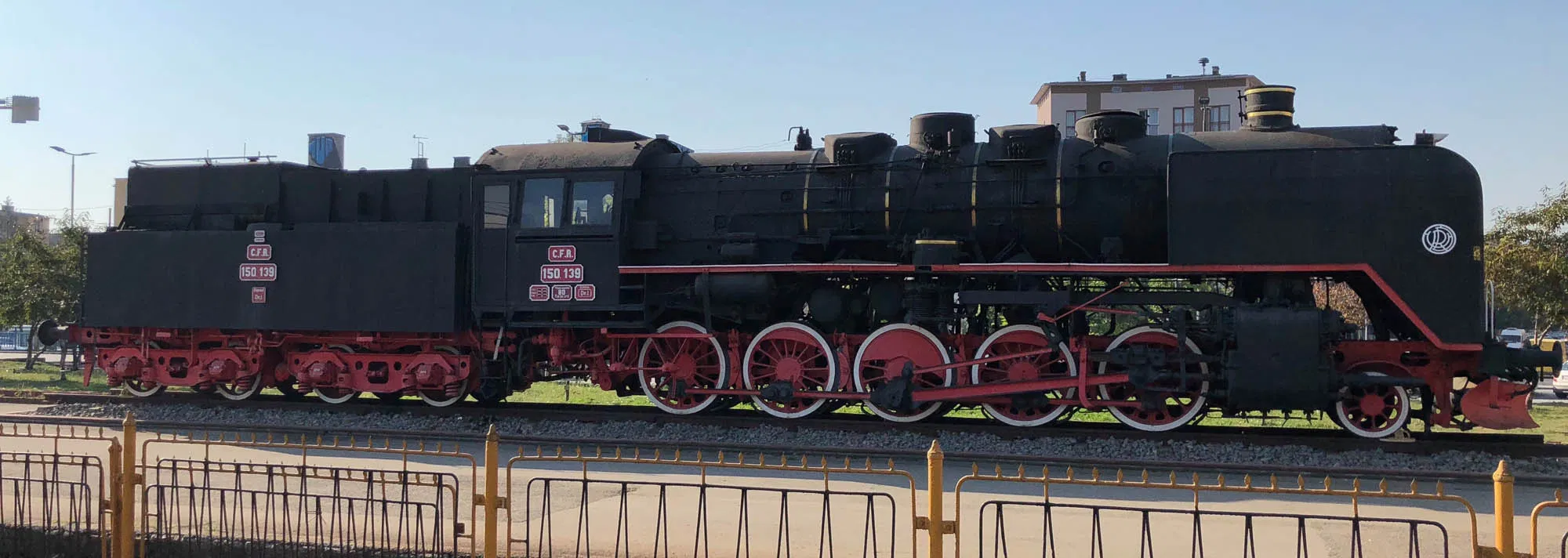
We left Cluj-Napoca on a train at 09:37, the rail route to Sighisoara is about 120 miles [approximately equivalent to Birmingham to London]. We are scheduled to arrive at 14:01, that’s near on 4.5 hours [average 27mph]. Oh well, sit back and remember the reasons we travel by train. Matilda who, when traveling, likes to read books set in the area she is visiting, was able to make significant headway towards finishing her current book: she has been re-reading Bram Stoker’s classic gothic novel Dracula on this journey. Robert watched a couple of documentaries on his iPad, then watched the fields go by. It would appear that sweetcorn is grown extensively in this part of the world, however, none of the local dishes seem to include it, so we wonder what it is used for, or whether is it just exported? Throughout the whole journey we ran parallel to a massive new engineering construction comprising a new railway line, half finished bridges, laid ballast, drainage channels and virgin trackwork. It is very nice to know that future travellers will be able to whizz from city-to-city on brand spanking new track, as we bounce along on the noisy slow route. As if to add insult to injury our train eased on to the new track for the last four miles into our destination, the train began to run smoothly and the noise level dropped dramatically. Maybe this will mean that tomorrow’s journey will see us continuing on the new track, you can only hope.
Here’s a photo of the lovely modern, high-speed, intercity, train that we have just spent 4.5 hours on.
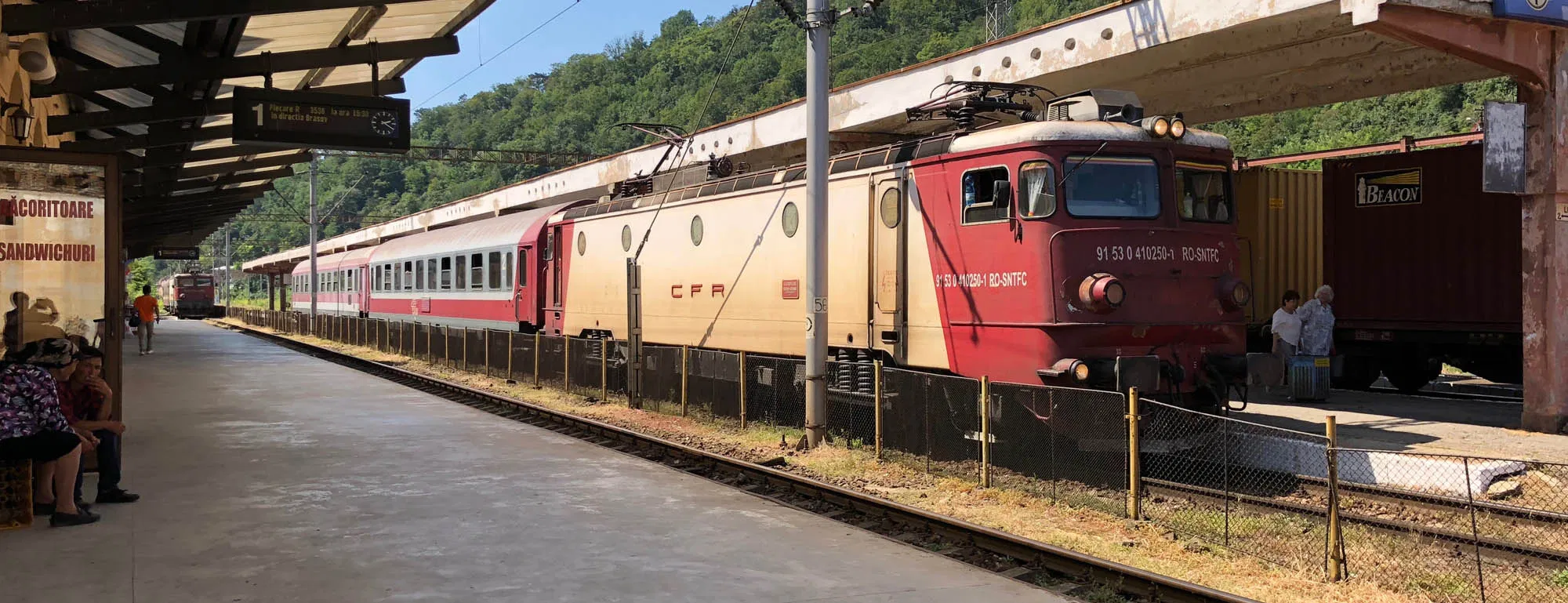
Sighisoara, built in the 12th century by Saxon settlers is promoted by the guidebooks as being the “best-preserved medieval town in Europe” and as such was designated a World Heritage Site by UNESCO in 1999.
It is high up on a hill and has a defensive wall running around it, broken at intervals by nine towers, each named after a trade or profession and each with its own story: Blacksmiths’ Tower (Turnul Fierarilor), Butchers’ Tower (Turnul Macelarilor), Cobblers’ Tower (Turnul Cizmarilor), Furriers’ Tower (Turnul Cojocarilor), Ropemakers’ Tower (Turnul Franghierilor), Tailors’ Tower (Turnul Croitorilor), Tanners’ Tower (Turnul Tabacarilor) and Tinsmiths’ Tower (Turnul Cositorilor). The ninth tower still standing is the Clock Tower. You can go up this to the observation deck for the views but we felt we had had enough climbing to altitude for one day.

From what we could interpret from the signs, several of the towers have, over the years, been burnt down and rebuilt. The cobbled streets, burgher houses and churches have survived the communist era and almost every building within the medieval town is a monument of historical interest.
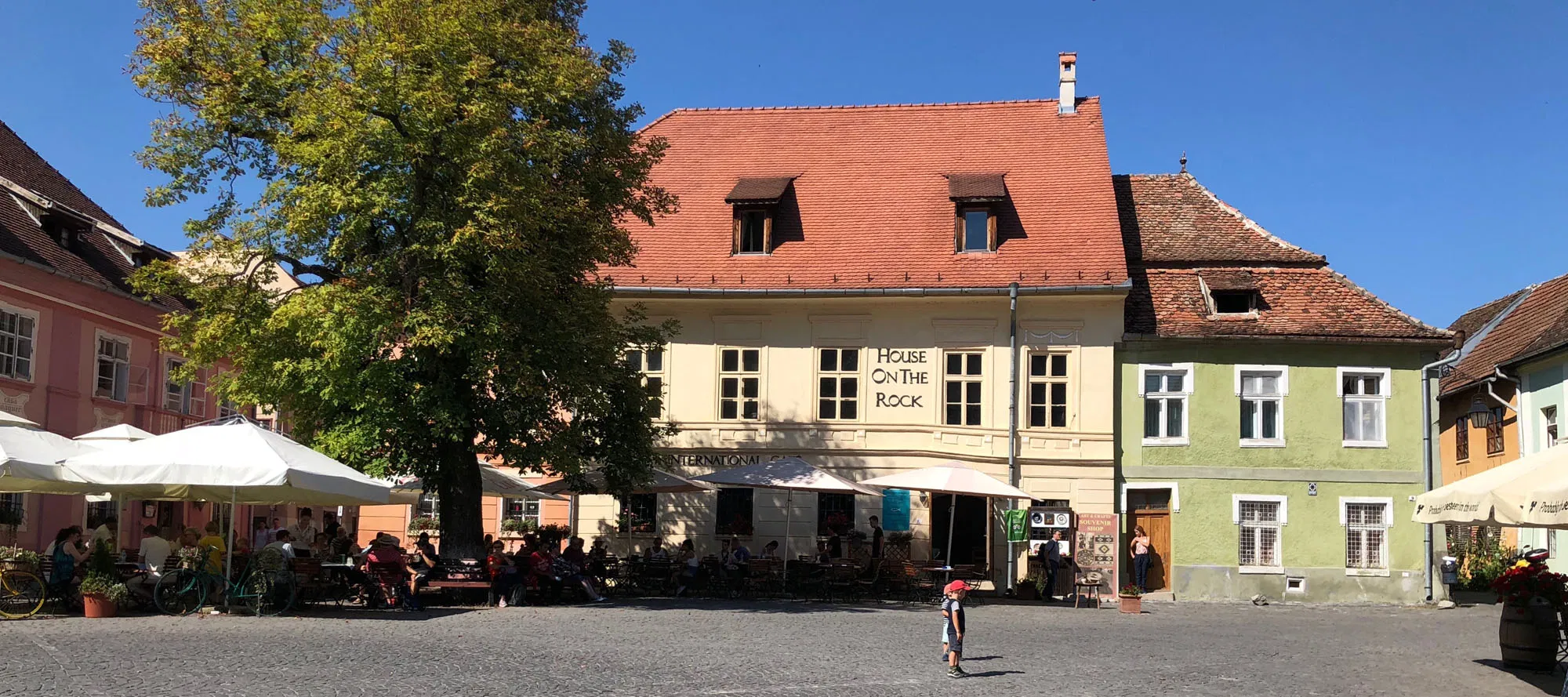
It is also the alleged birthplace of Vlad Dracula, sometimes known as Vlad Tepes (Vlad the Impaler), who was ruler of the province of Walachia for a brief period. He is said to have been the inspiration for Bram Stoker’s fictional creation, Count Dracula.
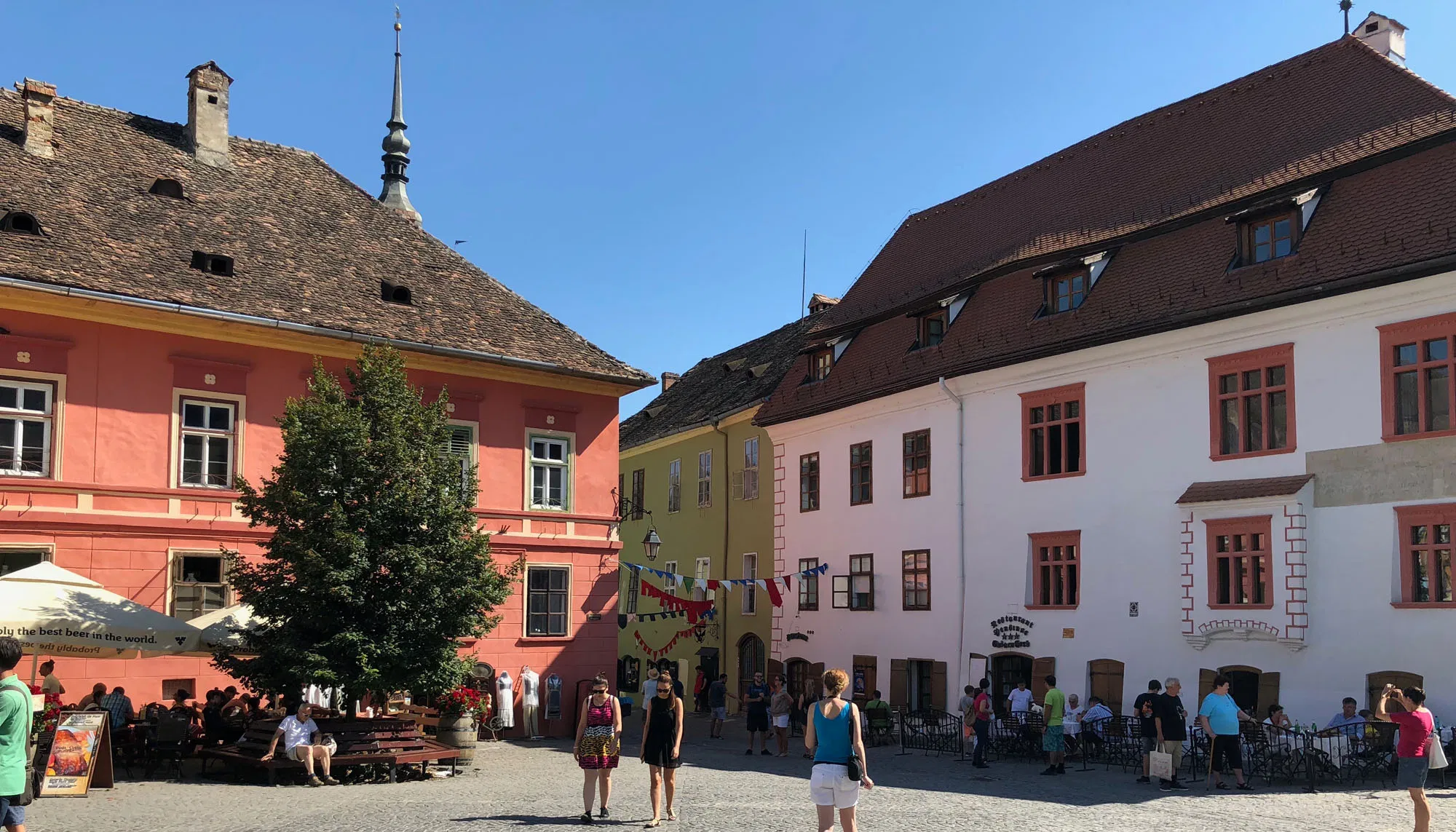
Historically there were seven Saxon walled citadels in Transylvania, and Sighisoara was not the biggest or richest but has become one of the most popular. A walk through the “town’s hilly streets with their original medieval architecture, magical mix of winding cobbled alleys, steep stairways, secluded squares, towers, turrets and enchantingly preserved citadel”, is like stepping back in time.
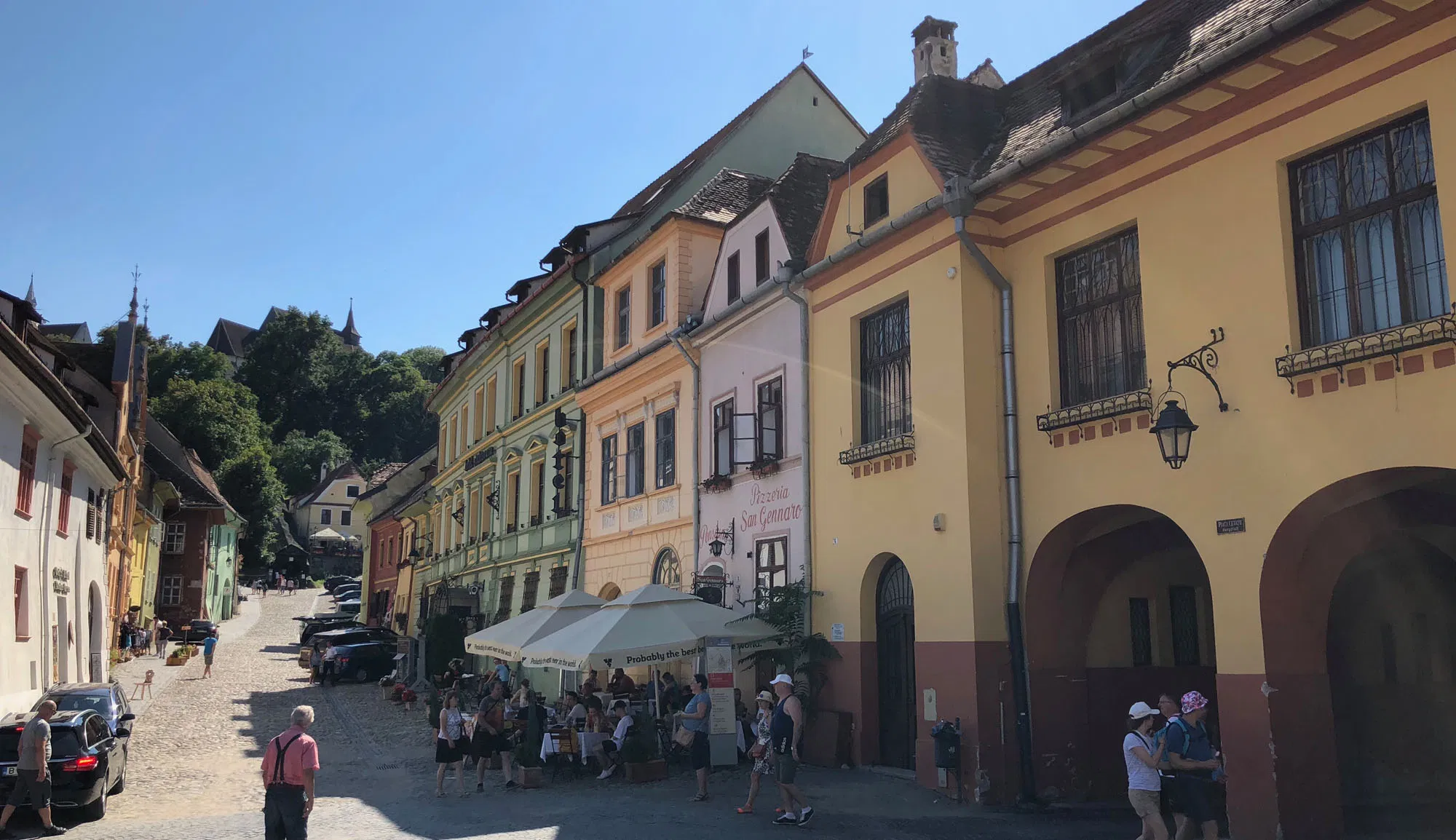
Although undoubtedly a cultural and historical gem, Sighisoara is certainly being exploited as such. We all know Robert is a train enthusiast but it was a little incongruous to see a tourist train, seen in so many towns and cities, here in the main square.
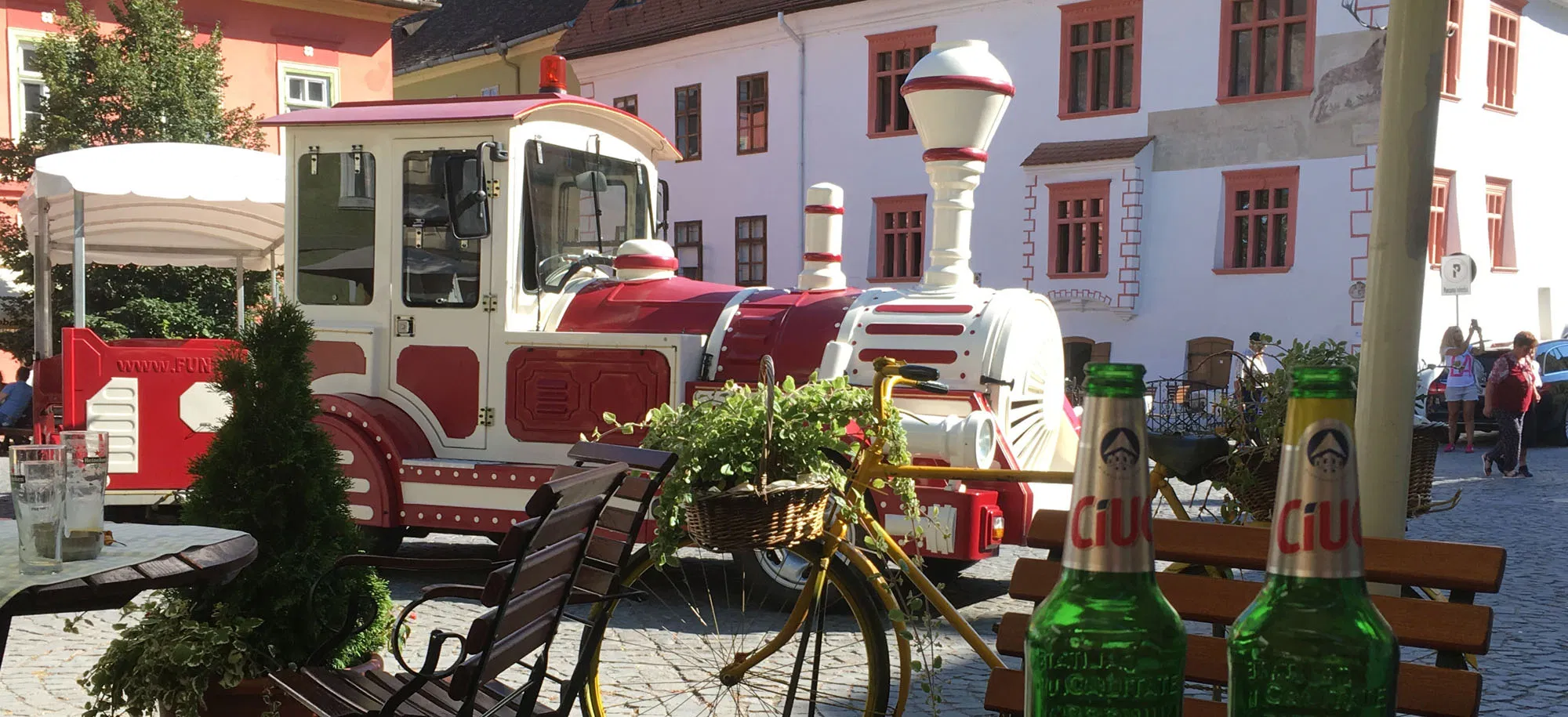
The roads are steep and cobbled with gulleys down the middle. Presumably in mediaeval times these were for effluent but now carry rainwater away. It is also where all the tourists choose to walk as this is more even than the larger cobbles on either side. The climb to the Church on the Hill is steep and, emerging from the crypt, Robert was not surprised to find a tour party there, filling almost the entire church. There is a wooden covered walkway between the top of the main square and the Church on the Hill and this proved to be quite cool on the route down.
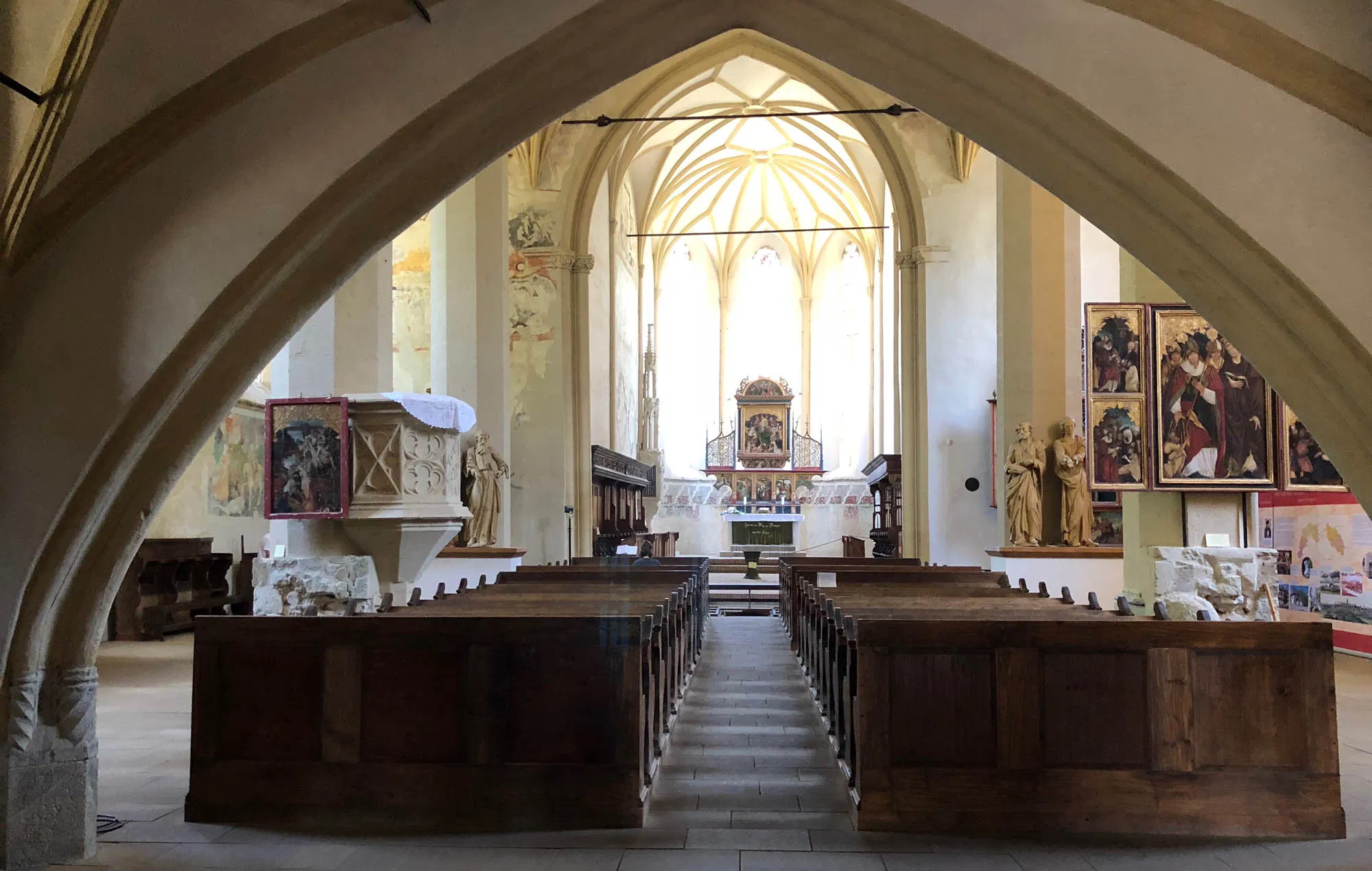
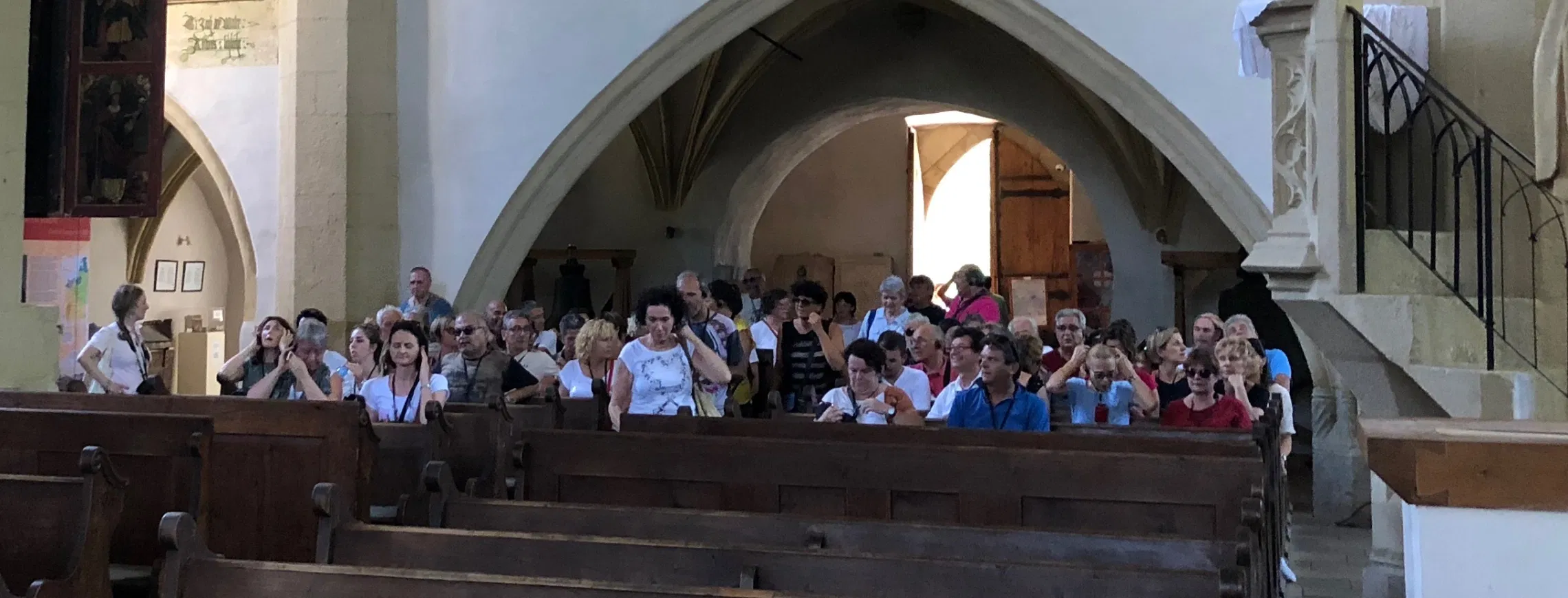
The seven walled Transylvanian Saxons citadels were called, during the medieval times, “Siebenbürgen”, “Seven towns”, akin to the English Cinque Ports. The other six of the seven Siebenbürgen citadels were: Bistrita (Bistritz), Brasov (Kronstadt), Cluj (Klausenburg), Medias (Mediasch), Sebes (Mühlbach) and Sibiu (Hermannstadt). We have visited Cluj and Brasov is our next stop.
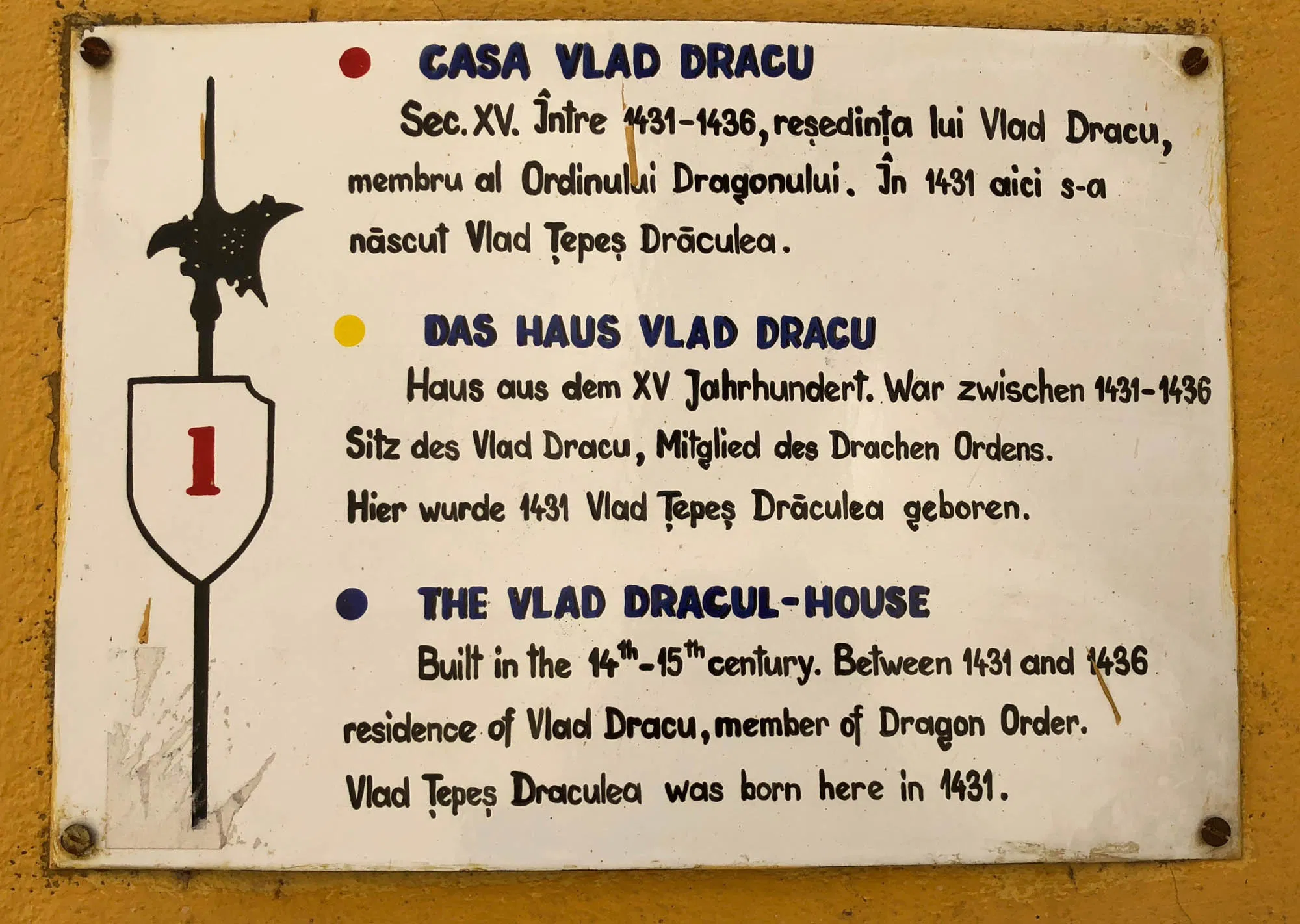
Although slightly disdainful of the tour groups, we felt we should have one drink in the place alleged to be Vlad the Impaler’s birth place. This was relatively quiet when we arrived but we were soon surrounded by an Italian tour group drinking something looking suspiciously like tequila sunrise but which was probably sold to them as some kind of blood cocktail.
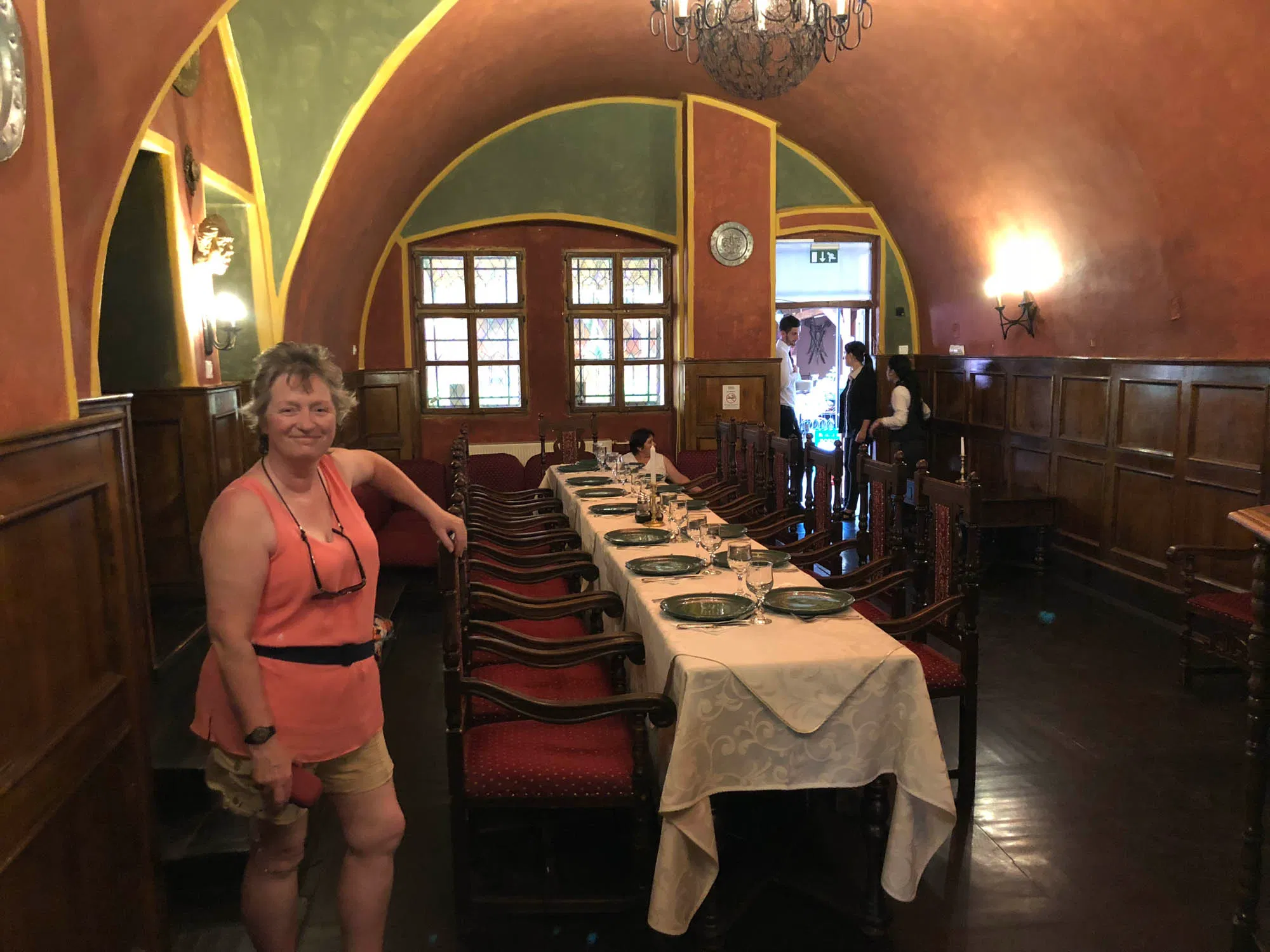
There is no place to expand in the old town and so residents need to make a profit wherever they can.
One of the bars in the main square served beer in mugs and although this seemed all wrong initially, it did seem to keep the beer nicely chilled.
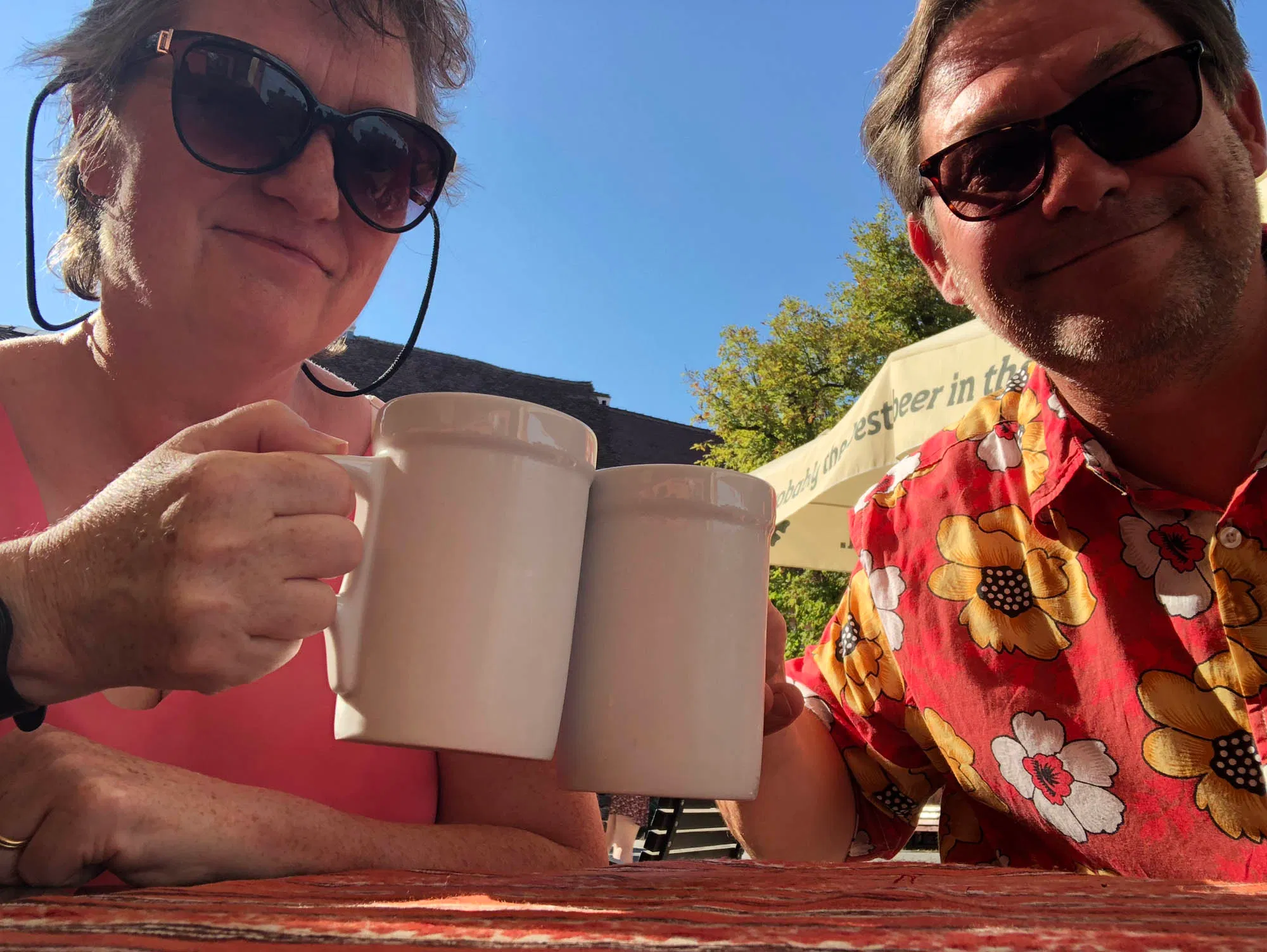
Lesson for the day: Chunky porelain keeps your beer chilled for longer than glass.
Miles walked today: 4.7
Flights climbed today: 30
Route Map:
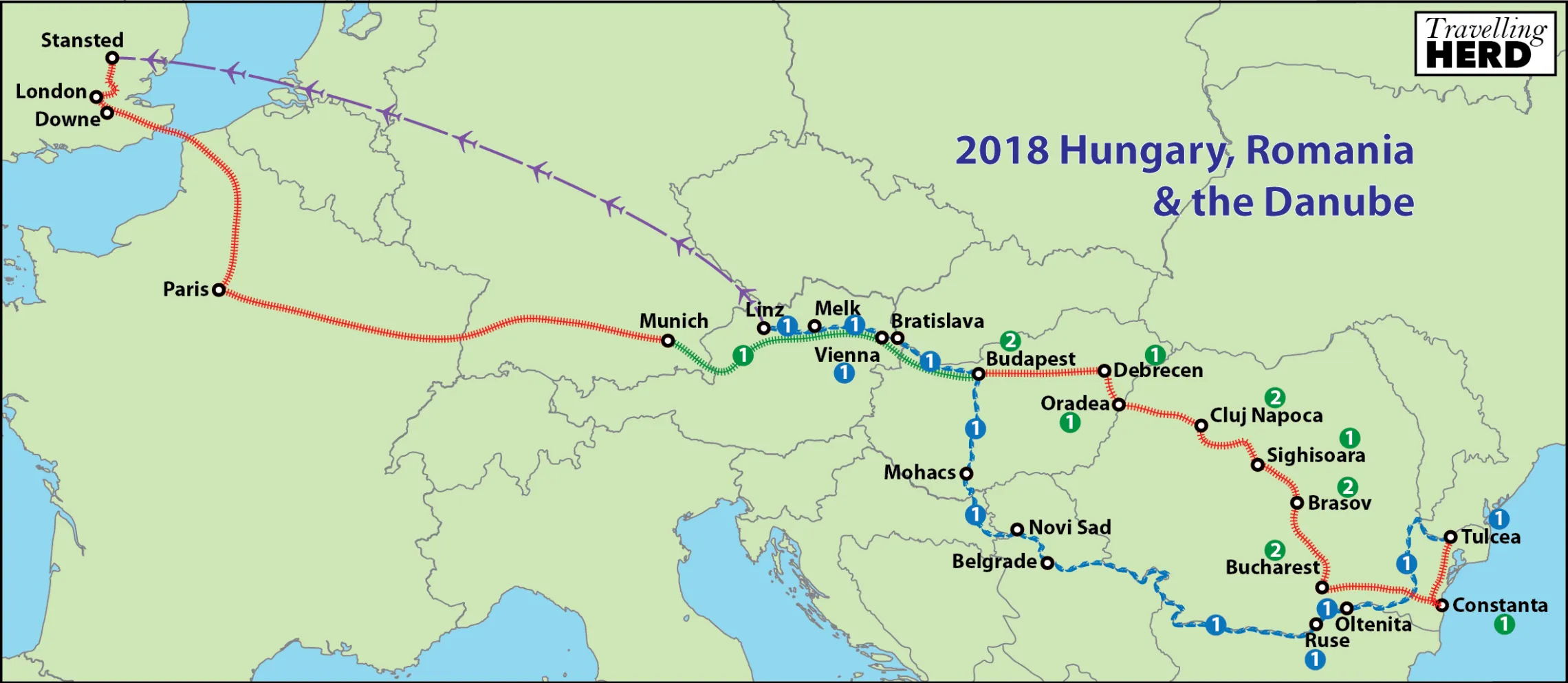

![Sighisoara, Dracula’s birthplace [allegedly]](https://i0.wp.com/iciel.uk/imagesTH/18-05-Danube/Post8/18-05-08-feature.jpeg?fit=2000%2C1313)



